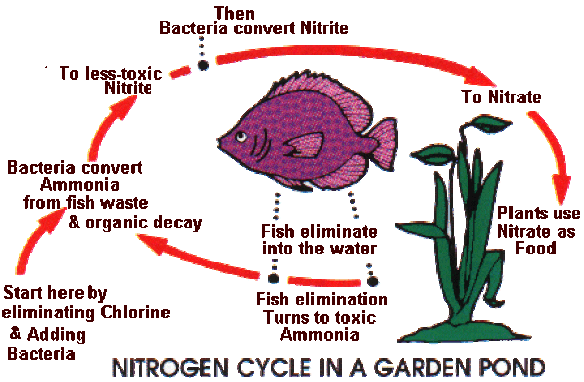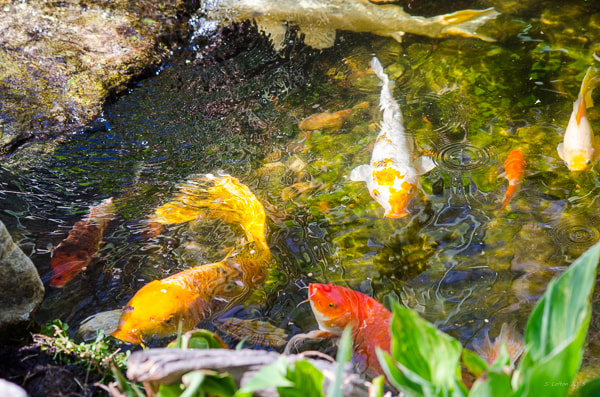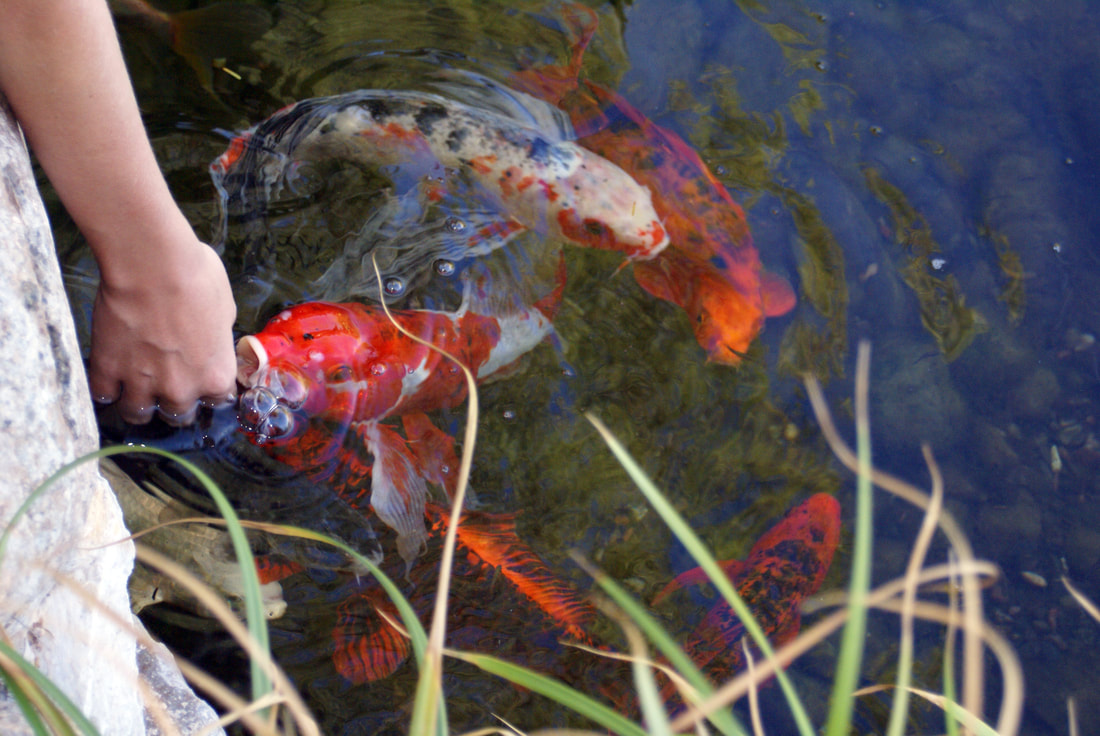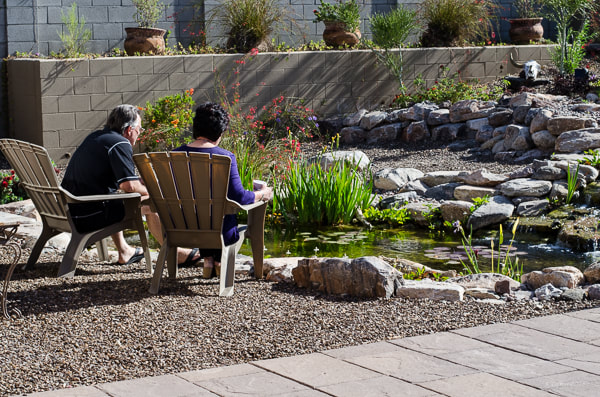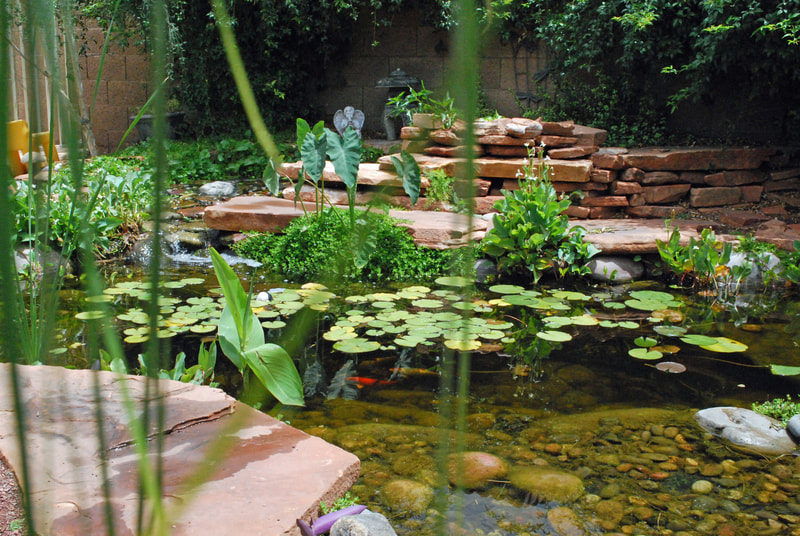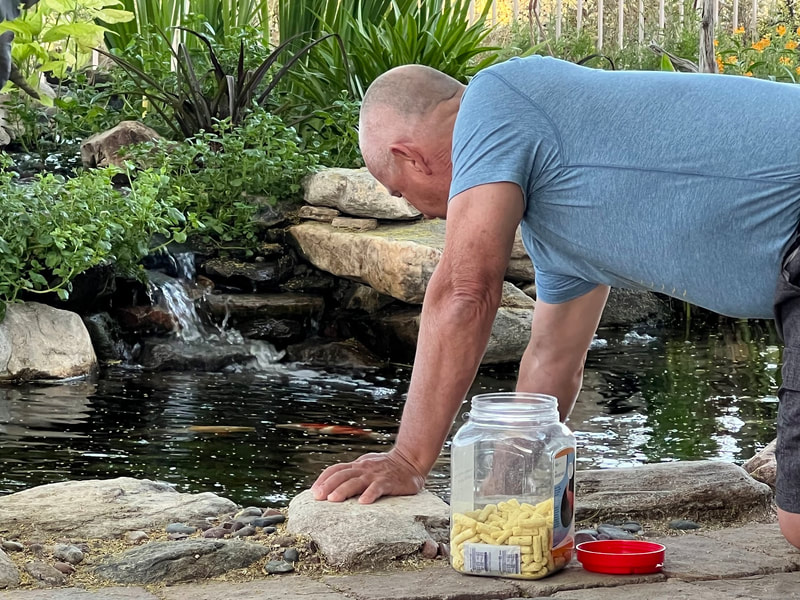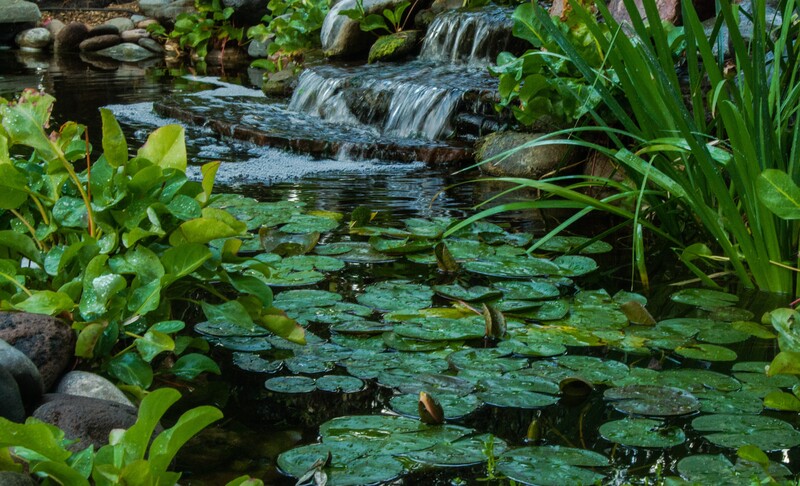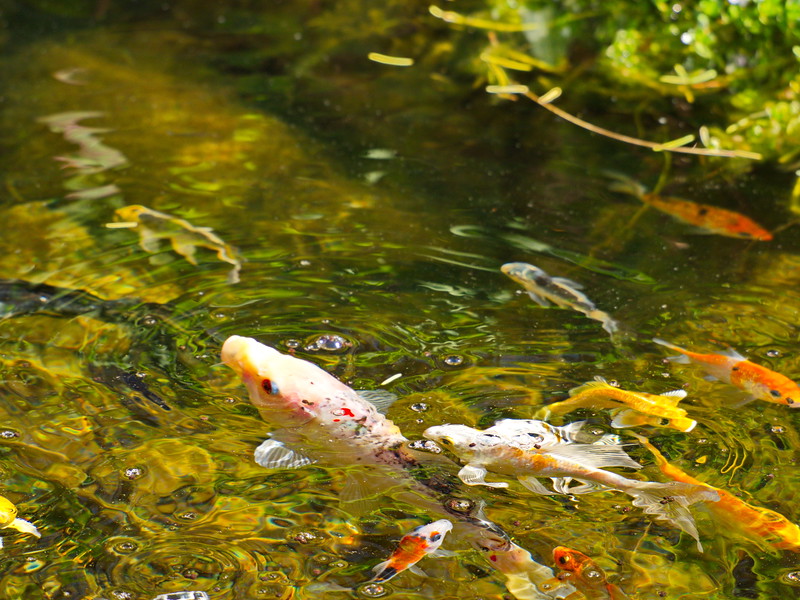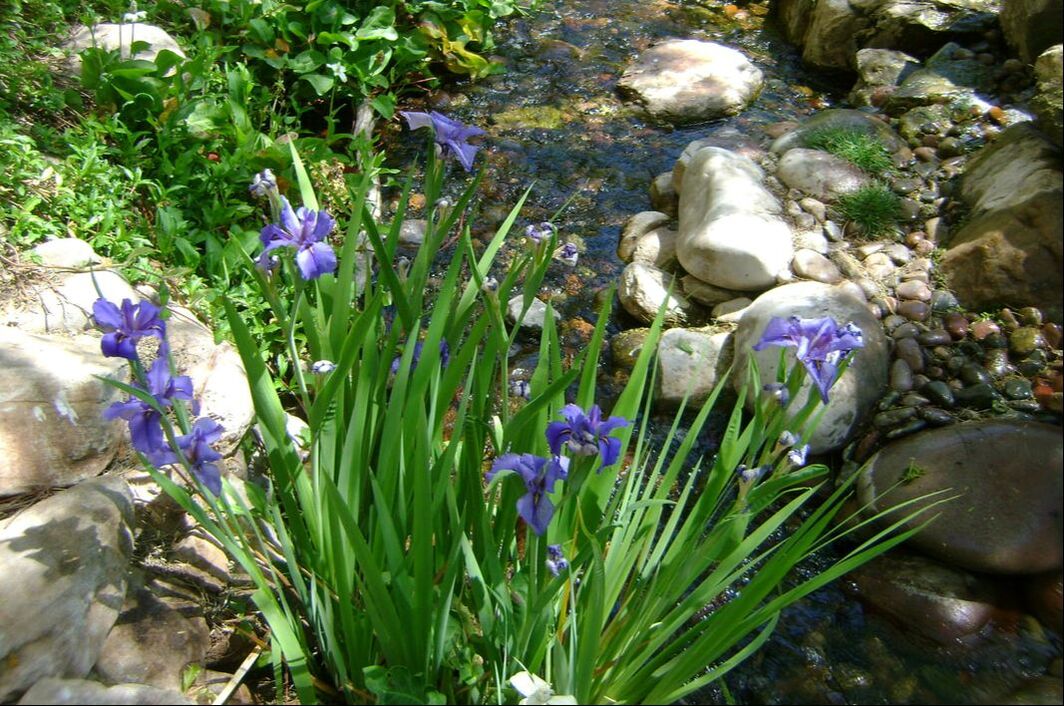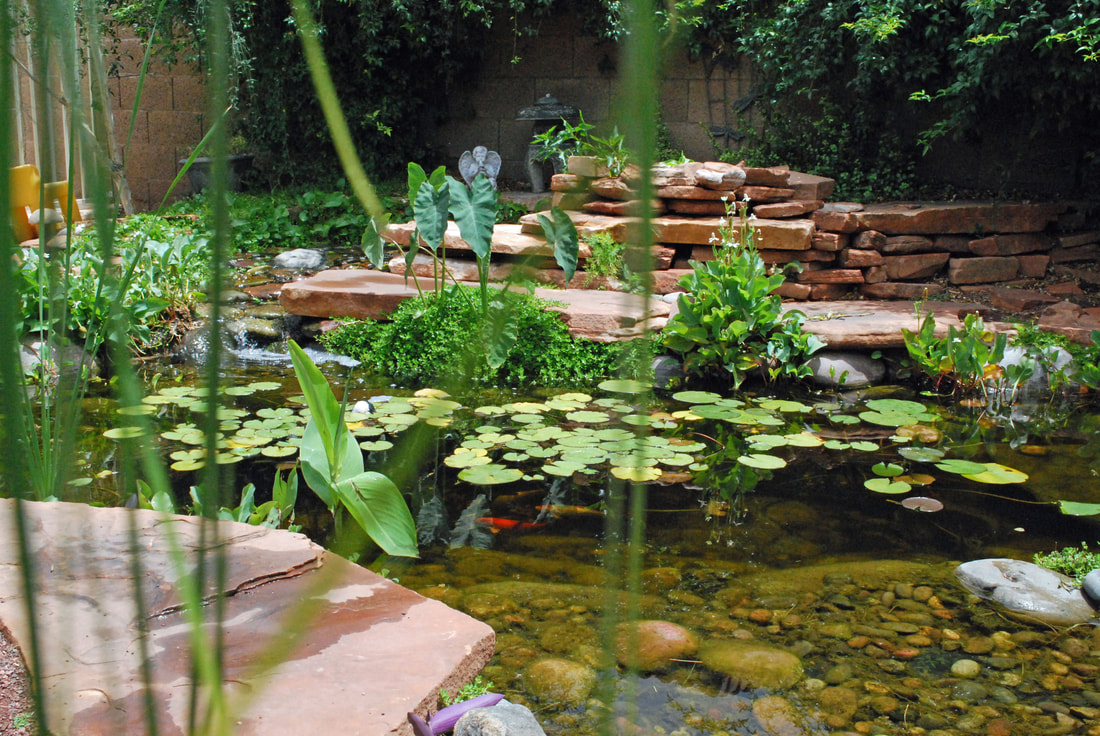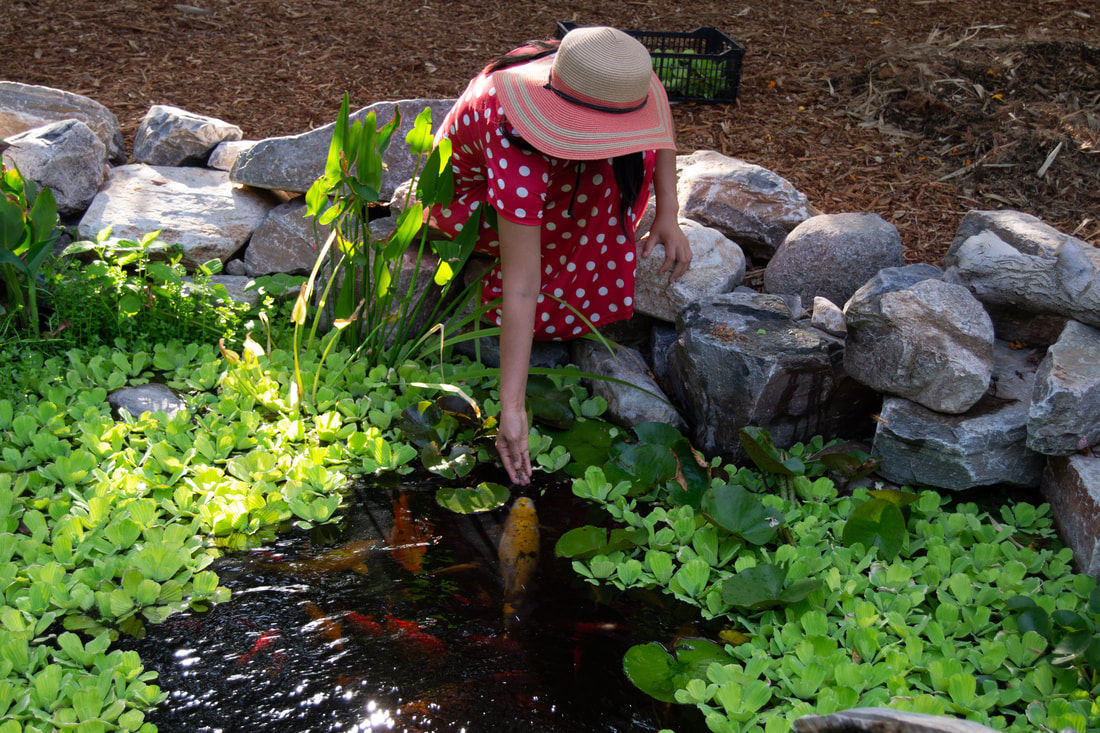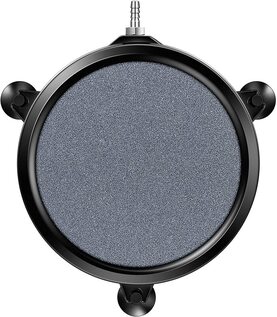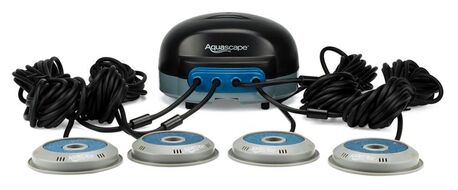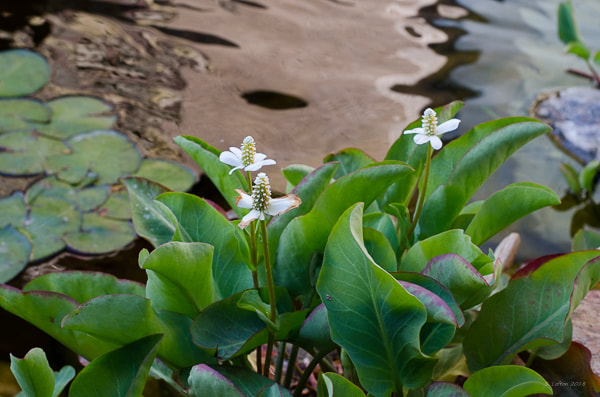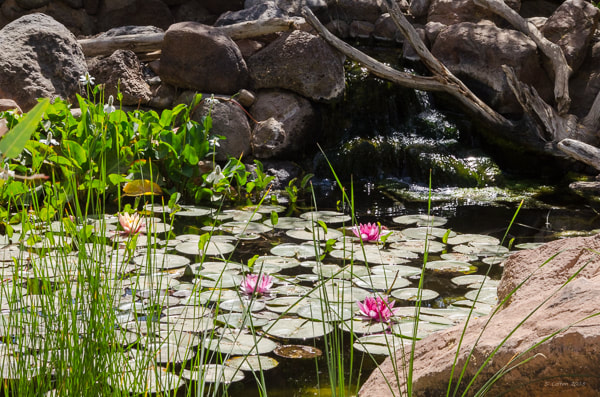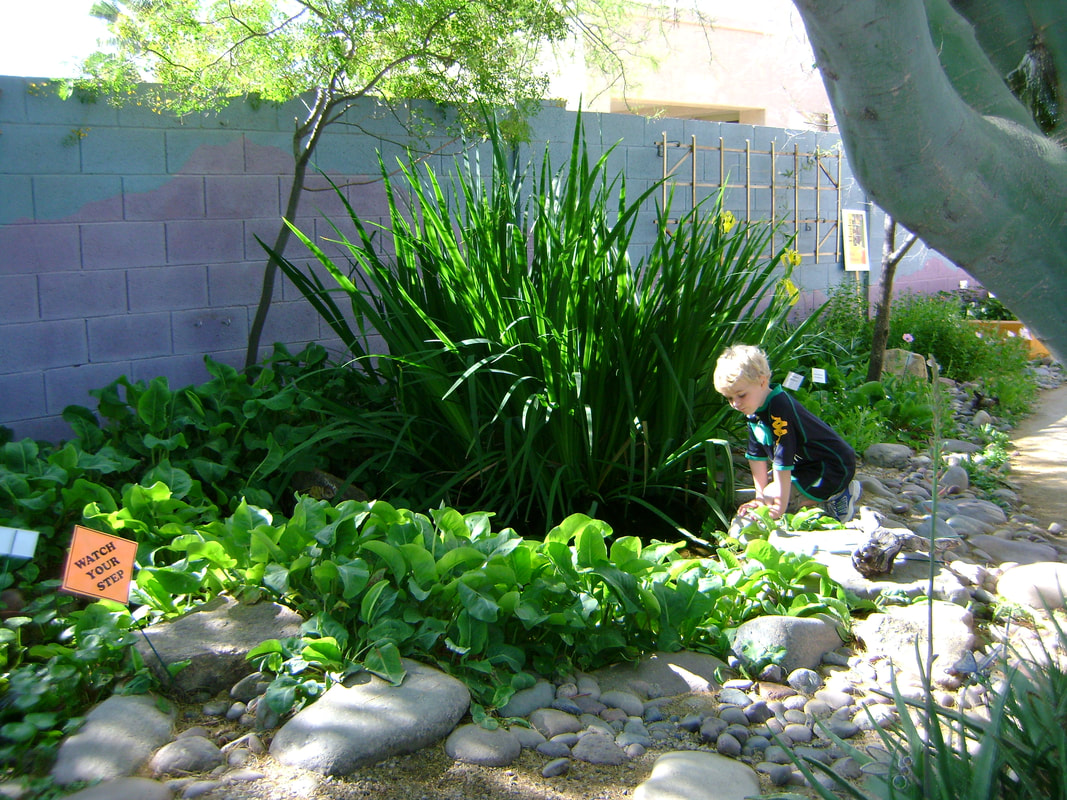|
One of the most confusing and intimidating aspects of caring for pond fish is the science of water quality and the pond nitrogen cycle. You may have heard horror stories about the constant monitoring of pond water just to make sure that the fish stay healthy. Unfortunately, these stories unnecessarily frighten people away from the joy of keeping fish. While pond water quality is important to the health of your fish, it doesn’t have to be complicated or scary. You don’t need to become obsessive with testing water quality, constantly adding chemicals, and doing things to make sure the water is pristine and perfect. There truly can be too much messing around with water. Keep it simple and your fish will thank you. Let’s look at the basic cycle of pond water and how it can affect your fish. The Importance of the Pond Nitrogen CycleThe nitrogen cycle is a natural process in which different types of beneficial bacteria break down compounds like ammonia and nitrite, reducing them to less harmful compounds like nitrate. This process occurs across three steps, from ammonia, to nitrite, to the final conversion into nitrate. The first process involves the accumulation of ammonia due to fish waste and decomposing material. As ammonia increases, Nitrosomonas bacteria start to consume it and break it down into nitrite. Once nitrite starts to accumulate, denitrifying bacteria break them down into nitrates. Nitrates are then removed from the system by plants, algae, or water changes. Because so many biological processes are required, it generally takes six to eight weeks for a pond system to run through the complete nitrogen cycle. Ammonia in the PondAmmonia is the main nitrogen waste from your fish, turtles, and other aquatic creatures, and functions as the start of nature’s nitrogen cycle. Did you know that ammonia is excreted partly by the fish’s kidneys, but mostly by the gills? This is relevant because it calls to mind the fact that if there is damage to a fish’s gills, the fish suffer more than just difficulty breathing. They could have trouble expelling their ammonia too. Constipation in any creature is not a happy place to be. High ammonia levels indicate that there are not enough beneficial nitrogen-reducing bacteria living in the pond yet. These bacteria proliferate over time, so ammonia problems are most common during the first six to eight weeks of a pond’s break-in period. Later, ammonia levels can climb again if the filter gets clogged up or a fish dies and starts decaying in the pond. You might see your fish “jumping” out of the pond when ammonia levels get high. This isn’t the only reason that fish jump, but it can be an indicator to just check for any issues. Control of ammonia involves reduced or suspended fish feedings, feeding low-protein food (33 percent or less), and/or upgrading your pond’s filtration. While water changes are the single best remedy for ammonia accumulations that threaten your fish, you can also use Ammonia Neutralizer. How Nitrite Affects Pond FishNitrite is produced from ammonia in the water by beneficial nitrogen-reducing bacteria. These bacteria cleave off ammonia’s hydrogen ions and replace them with oxygen. The pH of the water is then decreased by the release of these hydrogen ions. Your fish absorbs nitrites through the skin and gills. Inside the fish, nitrites bind the red blood cells, changing them from red to brown. Brown blood disease results from nitrite accumulations in the system. Nitrite is poisonous at levels as low as 0.1 ppm (parts per million), and fish that die from nitrite poisoning will commonly have flared gill covers. Nitrate: The Final ProductNitrate is the final product in the nitrogen cycle. Nitrites are broken down by another beneficial nitrogen-reducing bacteria and become nitrates. Plants and algae use nitrates, along with phosphates and iron, for cellular growth. When the nitrogen cycle is finished, you will see a sudden bloom of algae on the pond floor, or a green water explosion that obscures your view of the fish. This completion of the nitrogen cycle is typically a non-issue for fish health because fish aren’t harmed by acute or sudden exposure. However, with chronic, high levels of nitrate, you may notice weaker fish, slower growth, and increased illness overall. This is because high nitrate levels represent inferior water quality and this causes stress, making fish more vulnerable to disease. Nitrates should always be less than 80 ppm in an ornamental pond. To reduce nitrates, plants can be added, water changes can be performed, or algae growth can be encouraged. There are tremendous health benefits to a carpet of emerald-green algae on the pond bottom, the greatest of which is nutrition for the fish. This is why we always say that a little bit of algae is a good thing. Here at The Pond Gnome, we call it Pond Patina. Testing the pH of Your PondIn Arizona, this will drive you crazier than being put in a round room and told to sit in the corner. Our pH is very high, and oftentimes comes out of the tap at 9.0! Yep, we have very hard water here. Honestly, we don’t recommend worrying about or trying to affect the pH in your pond. But if you must… Testing water pH is simply a measurement of the free hydrogen ions (H+) in the pond. It is measured on a scale of one to fourteen with anything below seven being acidic and anything above seven being alkaline. The pH required for aquatic life ranges between 5.5 and 8.0. Koi and goldfish can tolerate a very high pH measurement. Some pond owners spend a lot of time trying to bring down the pH level, but this is unnecessary unless there is also ammonia accumulation in the pond. The toxicity of ammonia is influenced by pH, so at higher pH values, ammonia is more toxic. Below a pH of 7.2, most ammonia is ionized to ammonium and is far less toxic. The pH level in ponds impacts fish in several ways. First, if it is too low, a condition inside the fish called acidosis results. Symptoms are a loss of appetite and then production of excess slime, as well as isolation and resting on the bottom of the pond. This is followed by a streaking of the fins, and then death. If the pH is too high (over 10.0), the fish will produce excess slime and gasp at the surface of the water. This condition, called alkalosis, is hard to rapidly reverse once it occurs. A Word About Chlorine and ChloramineChlorine and chloramines are generally added to tap water by municipal water suppliers to make it safe to drink. However, these same compounds are toxic to fish and bacteria and can kill them if exposed for too long. Basically, the chlorine and chloramines burn and destroy the gills of the fish. De-chlorinators such as Pond Detoxifier remove and neutralize these chemicals and should be used whenever more than 10 to 15 percent of the pond’s total water volume is being added. The good news is that these chemicals evaporate out of the water fairly quickly on their own. The Final VerdictThe only way to know for sure what your pond is up to is to test the water for harmful compounds or changing parameters. There is no need to perform regular testing, however, especially if your fish level is low. We recommend stocking your pond with no more than one inch of fish per 10 gallons of water. You might want to test the water if you see your fish behaving or looking differently. A quick test can help you identify your next steps for encouraging a healthy environment for your finned friends. Granted, it may seem intimidating at first, but once you understand how to measure and control pond water factors, it becomes easy and starts to feel like second nature. The bottom line – healthy water equals healthy fish. OTHER POSTS YOU MIGHT ENJOY: Who doesn’t love Koi in their pond? They’re beautiful and friendly, providing glimmers of color as they weave their way beneath and between the lily pads. Certainly, they deserve their rightful place in a tranquil water garden. But what about other options? An array of pond fish is just waiting to call your pond their home. Goldfish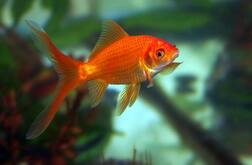 Fantail Goldfish are perfect for your pond: resilient and able to handle all different kinds of water. For the newbie pond owner, goldfish are a great choice for getting started with fish-keeping. Several varieties of goldfish are available, from comets (plain orange and white) to the exotics like ranchus and bubble-eyes. Exotic Goldfish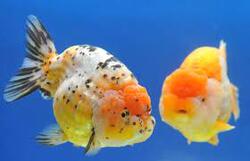 Included in this showy category are lion heads, telescopes, black moors, orandas, ranchus, and ryukins. The single most distinguishing characteristic of this group as a whole, is their round, bulbous abdomens. Oranda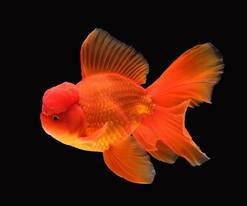 With this exotic group, extra caution should be taken if they are going to be placed outdoors. They’re not as hardy as some of the other goldfish. This is especially true of the adults of these varieties. Shubunkins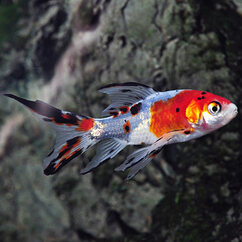 The shubunkin is a type of single-tailed, long-bodied goldfish that originated in China. There are two different types of shubunkins. One has a long tail fin, with broad tail fin lobes that are rounded on the end. The other one looks more like a common goldfish, with a short tail fin. Bred mainly for their coloring, shubunkins often have a red, black, and sky-blue coloring, sort of like a calico. The most valuable of the shubunkins are mostly blue with strong accents of white and red, and the overall pattern sparingly flecked with black. In fact, when blessed with a white, black, and orange pattern, some may resemble baby Koi but are far from it. They are different in size and markings. Most notably, they lack barbells (whiskers of sorts) that are found on Koi. Shubunkins are hardy fish that can survive sweltering summers and can grow up to 14 inches in a minimum 180-gallon pond. Sarassas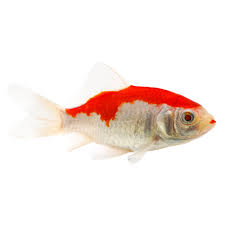 Sarassas are very similar to shubunkins in that they both have a similar body shape; however, they do not quite reach the same size as their larger shubunkin counterparts. The sarassa features a white base color and brilliant red highlights. It is believed that they came from a cross between the red cap oranda and the comet goldfish and are sometimes referred to as the poor man’s Koi. Amazingly, the brilliant red of the true sarassa is a lifelong proposition and the fish are very enjoyable. Uncontrolled breeding of the sarassa will yield more and more brown fish until the pond population has returned to unselected comet and brown goldfish ancestry. Orfes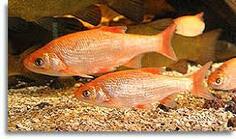 There are also some fish, which you may have never heard of, that would make great pond fish. Orfes, for example, call many a backyard pond home. In its native habitat, the Danube River, the golden orfe is a dark silvery color, but received its golden color when bred in Europe. The bright orange color is very attractive, especially since they characteristically swim near the surface of most ponds with the rest of their group. This is helpful because their presence near the top of the pond can also encourage Koi and other goldfish to visit the surface of the water as well. One thing to keep in mind is that golden orfe grow extremely fast. A 2 to 3-inch golden orfe can quickly reach sizes of 2 to 2½ feet! While golden orfe feed mostly on insect larvae, worms, and fallen insects, they are derived from the predatory side (in their original silver color) and could pose a risk to the rest of the aquatic life, although it is unlikely. Orfe are highly sensitive to fish medications of most kinds, and extreme care must be taken. Catfish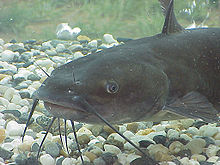 Catfish are another popular fish seen in the water garden. They are commonly sold as scavengers to help clean up the pond, but they really don’t do that much of it. Caution should be taken with these fish because they can become quite large in a short period of time. When they become large, they can cause trouble because they may start eating whatever they can fit in their mouth – including other fish! Learning about FishGetting to know the background of the pond fish you plan to keep as pets is vital to their survival and your sanity. By knowing their defining characteristics, you will have a thorough understanding of how the fish will interact in your pond with other fish, plants, and aquatic life. Other Fish You May Want to Research:
So, who is ready to “dive” into the wonderful world of pond fish beyond Koi? Don’t have a pond yet? We can help with that! OTHER POSTS YOU MIGHT ENJOY:
For many pond owners, having fish in their pond is the main reason for creating a water feature in the first place. Plenty of pond owners have been keeping aquarium fish for years and decide to expand their hobby to the outdoors. Others see fish as a beautiful addition to their water garden. No matter your motive for owning pond fish, you’ll enjoy this satisfying hobby for years to come. You might be surprised at the affinity you acquire for your fish and find them to be just as important as a pet dog or cat. You may even decide to name them! And just like your furry friends, your finned friends need a little special care and should be given proper nutrition to survive and thrive. Learn what you need to know about feeding koi and pond fish. To Feed or Not to FeedFeeding koi is a fun activity that the whole family can enjoy. After you first bring your fish home, they’ll be a little shy and won’t seem interested in what you’re feeding them. They might even hide among the rocks and caves for quite a while. Don’t worry too much about this; just sprinkle a little food in the pond and move back. After a few minutes, they’ll likely take an interest in the food. Try to be consistent when feeding. Feed them at the same time from the same location and they’ll become conditioned to your visits. Since everything you put into the pond is going to be broken down and removed by the filter, it’s important to remember to only feed your fish high-quality food that is specifically designed for the fish in your pond. Feeding them low-quality food can lead to water quality issues like green water, string algae, and poor water conditions. Many pond owners also choose to offer their fish a treat now and again. If you want to do the same, try a little fresh watermelon and watch your fish go crazy. Other options include small orange slices like mandarin oranges or Honey Nut Cheerios. Keep in mind that the natural ecosystem has to deal with every bit of food that’s not consumed and left in the pond. So, be careful not to overfeed. Two Minute RuleA good rule of thumb is to only offer what your koi and other pond fish can eat in two minutes. The decision to feed your fish is up to you. Many pond owners never throw a single piece of food into their pond. Your pond will produce food for your fish to eat and also help create a balance between plants and fish. Larger fish, however, need more food than small ones, so they may look to your plants for snacks if not fed enough. Not to mention, feeding koi and pond fish adds fun and enjoyment to your life. Choosing the Best FoodStudies have been done comparing the digestion of protein from various sources in fish and found that fish proteins were the best digested and assimilated by fish. Simply put, fish eat fish. Fish are adapted to the consumption of others in their food chain, so fish proteins are the best choice of food. When you look at a bag of fish food, the first ingredient listed should be fish or other aquaculture proteins. Are Plant Proteins Bad?Plant proteins aren’t necessarily bad when feeding koi and pond fish. They provide other nutritional value such as fiber, plant protein, and carbohydrates (energy). Plant proteins shouldn’t replace aquaculture proteins, but when used in conjunction with each other, it’s beneficial because proteins in corn, soy, or wheat are very different from proteins in a food ingredient like shrimp or blood meal. So, you might see fishmeal listed as the first ingredient, and then wheat germ, soybean meal, or corn gluten meal lower on the list. This is perfectly acceptable and nutritious. Assessing an Ingredient LabelIngredient labels can be very exciting, or very misleading. They can be exciting because they seem to report excellent ingredients and real care and attention in manufacturing. Misleading labels use techniques like ingredient-splitting and foreign laws to confuse the consumer. So let’s assess a label together in nine steps: Protein source – Look for blood meal, fish meal, squid meal, shrimp meal, herring meal, or other aquaculture protein as the first ingredients. These are the best protein sources for fish. Purpose of plant material – If you find a food that has no aquaculture protein, but two plant proteins, then the manufacturer is trying to get less expensive plant ingredients to do what fishmeal should be doing. But, if you find a food with fishmeal as the first ingredient and then wheat germ or similar, they are using the plant ingredient for protein and energy, letting the fishmeal carry the bulk of the protein requirement, which is as it should be. Protein percent – Because of the simplicity and shortness of the tract, koi can’t digest more than 32 to 36 percent protein in one pass. Feeding more than that isn’t necessarily a bad thing because fish will simply pass what they don’t digest – it’s just expensive to pay for it. Fat content – Find a fish food with between three and ten percent crude fat. The high end of this range is good for smaller (young) fish, and the lower end of the range is good for adult fish. Ascorbic acid – Make sure ascorbic acid, or L-Ascorbyl-2-Phosphate is on the label among the trailing ingredients. It will represent a very small part of the diet, but it should be added to any milled food. Immune boosters – Some foods are made with immune boosters. Look for any combination of the following supposed immune-boosting ingredients: optimum, aquagen, nucleotides, torula yeast, brewer’s yeast, bee propolis, colostrum, aspergillus niger, beta carotene, lactoferrin. These may perform as promised, and certainly don’t hurt, but don’t depend on any particular ingredient as a miracle supplement or lifesaver. Just recognize that the addition of these items represents the manufacturer as a little more attentive and knowledgeable, and the food worth a little extra money. Color enhancers – Are there color enhancers in the diet? Look for terms like spirulina, bio-red, beta carotene, canthaxanthin, marigold petals, xanthins, shrimp oil, synthetic and non-synthetic carotenoids, or color enhancers on the label. Shrimp oil is the most expensive and performs well or better than synthetic carotenoids but is acceptable. Spirulina cannot push color unless the fish are exposed to sunlight and have the genetics for color. None of these color enhancers are hazardous to fish, but they can make a fish with a yellow head more yellow, or a fish with a tendency towards pink, pinker. No color enhancer can replace the irrefutable contribution of genetics and sunlight. Ash content (if stated) – Some fish food manufacturers will tell you the “crap” content of their food. Ash is what’s left behind when you incinerate (or the fish digests) the food. It’s almost all carbon and mineral. So, the higher the ash content, the less likely one is to appreciate it. Generally, when ash is high, a smart label guy would just leave it off, and they are allowed to skip this information because it’s not required on fish food bags. Because your finned friends live in a manmade water garden, they depend on you for proper nutrition and sustenance. Learning how to shop for the best quality food, the proper time to feed them, and what treats they enjoy can ensure your friends stay healthy and increase your enjoyment of your backyard pond. Now that you know the basics of feeding koi, you can enjoy your fish for many years to come. OTHER POSTS YOU MIGHT ENJOY: We HIGHLY recommend (and have been preaching this for years) that Phoenix pond owners keep some battery-operated air stones on hand in case of emergency during the summer months. Warm water naturally holds less oxygen than cold water. At night, aquatic plants respirate carbon dioxide and steal oxygen from the already low-oxygenated warm water. Combined with a power or pump outage, this can create a very dangerous situation and suffocate the large fish in your pond overnight. Water movement and oxygen exchange are critical for keeping larger fish in your pond. Having an aerator in your pond is a great way to help out the oxygen transfer (as well as offer some predator protection because they can’t see through the bubbles), but if your power goes out for any length of time, a battery-operated air stone could save the lives of your larger fish. Having an extra pump on hand may seem like a smart idea; however, the warranty period starts running at the time of purchase. Air stones are not ideal, but it’s certainly way better than nothing! Guidelines for Air Stones IN A PHOENIX PONDThere are some general guidelines to help determine how many air stones you might need to have on hand and drop in your pond in case of emergency. The guidelines assume the following:
If your pond meets the standards listed above, there is a rule of thumb you can use to determine how many 8” air stones you would need to keep your fish alive during a power outage or pump failure. If your pond exceeds any of these standards, you will need to adjust the recommended quantity to account for your specific conditions. Err on the side of caution because you can't have TOO much oxygen. Rule of Thumb for Air Stones in a Phoenix PondWe recommend one 8” air stone for every 25 sf of pond surface area. Remember, square feet is calculated by multiplying length times width. So, if you have an 8’ x 10’ pond, you have 80 square feet of surface area. 20% plant coverage would mean no more than 16 sf of water lily/plant coverage over the surface, so you would need a MINIMUM of 3 air stones. Again, if you have fish over 6” long, you need more because they need more oxygen than smaller fish. If there is mulm on the bottom of the pond, keep the air stone(s) on a shelf above that so that you’re not stirring the mulm into the water column, which would exacerbate the situation. Where to Get Air Stones for your Phoenix PondAir stones are used for bait keepers, and can generally be found at any sporting goods store. They are used to keep bait alive for fishermen. Don’t wait until something happens, and the emergency is upon you – prepare now! At this time, The Pond Gnome does not offer 24-hour emergency service outside of our Platinum Maintenance Program. We may not be able to get help to you as soon as we would like for a pump replacement (and we have no control over power outages or electrical failures), so please, please, PLEASE take steps to take care of your fin-babies! OTHER POSTS YOU MIGHT ENJOY: MY POND PUMP QUIT! 7 TIPS TO KEEP POND WATER CLEAN CONTROLLING POND PLANTS The beauty and joy of a pond makes summer far more memorable and relaxing! Summer is still in full swing here in Phoenix (as demonstrated by the 100+ degree days) and every moment with your finned friends and pond plants should be thoroughly relished. To fully enjoy yourself while Living the Aquascape Lifestyle®, you want to make sure your water feature is healthy and functioning optimally throughout the remainder of the warmer months. When water temperature remains above 80 degrees, it’s important to keep a few things in mind. Health of Your Pond FishKeep an eye on your fish. Do your finned friends appear stressed out, gasping for air close to the water’s surface or especially close to a fountain or waterfall? Warm water has a low capacity for holding oxygen, while cooler water can hold very large amounts of oxygen. Warm pond water and increased fish activity go hand and hand, and that increased activity also means your fish require more oxygen when less oxygen is available, thus creating a vicious cycle. Stressed fish often begin to develop diseases, and soon enough you’ll have a domino effect. If you haven’t already done so, add oxygen to your pond by placing an aerator in your pond. You can also install a fountain with a pump, or even a simple spitter, if your pond doesn’t have a waterfall or stream -- and even if it does, this adds more interest in addition to more oxygen. Make sure all areas of the pond are skimmed and the water is being circulated -- keep those streams and waterways clear and flowing. And keep in mind that waterfalls, streams, and even fountains play a huge part in the oxygenation of the water in your pond. Beat the HeatThere are some preventative measures you can take in order to keep your pond from turning into a warm, unhealthy mess at the end of summer. It all starts with a well-designed water feature. Depth of water, plant coverage, shade, and circulation should all be considered when designing and building a pond. A minimum depth of two feet is suggested; the bottom of the pond will remain cooler. You’ll also want to stock your pond with a lot of plants to provide shade for the fish. A good rule of thumb is to provide plant coverage of approximately 1/3 to 1/2 of the pond’s surface area. It’s not too late to add plants to your pond. Perhaps one of the most important parts of pond design is circulation. Hopefully your biological filter and mechanical filter are placed across the pond from each other, so that your pond receives optimal circulation. If not, consider adding a fountain or spitter for additional circulation and to create movement in stagnant areas. Additional Late Summer Pond TipsDuring the final months of summer, you can use these tips to help keep your pond performing optimally:
OTHER POSTS YOU MIGHT ENJOY: WHAT SHOULD I DO ABOUT BEES IN MY POND? 7 TIPS TO KEEP POND WATER CLEAN TREES NEXT TO A POND |
The Pond Gnome offers Pond Design, Pond Construction, Pond Maintenance, Pond Remodeling, Pond Replacement, and Pond Cleaning Services for the Greater Phoenix Metropolitan area, including the cities of Phoenix, Scottsdale, Paradise Valley, Carefree, Cave Creek, Glendale, Peoria, Sun City, and other surrounding communities.
Our Services |
Company |
|
